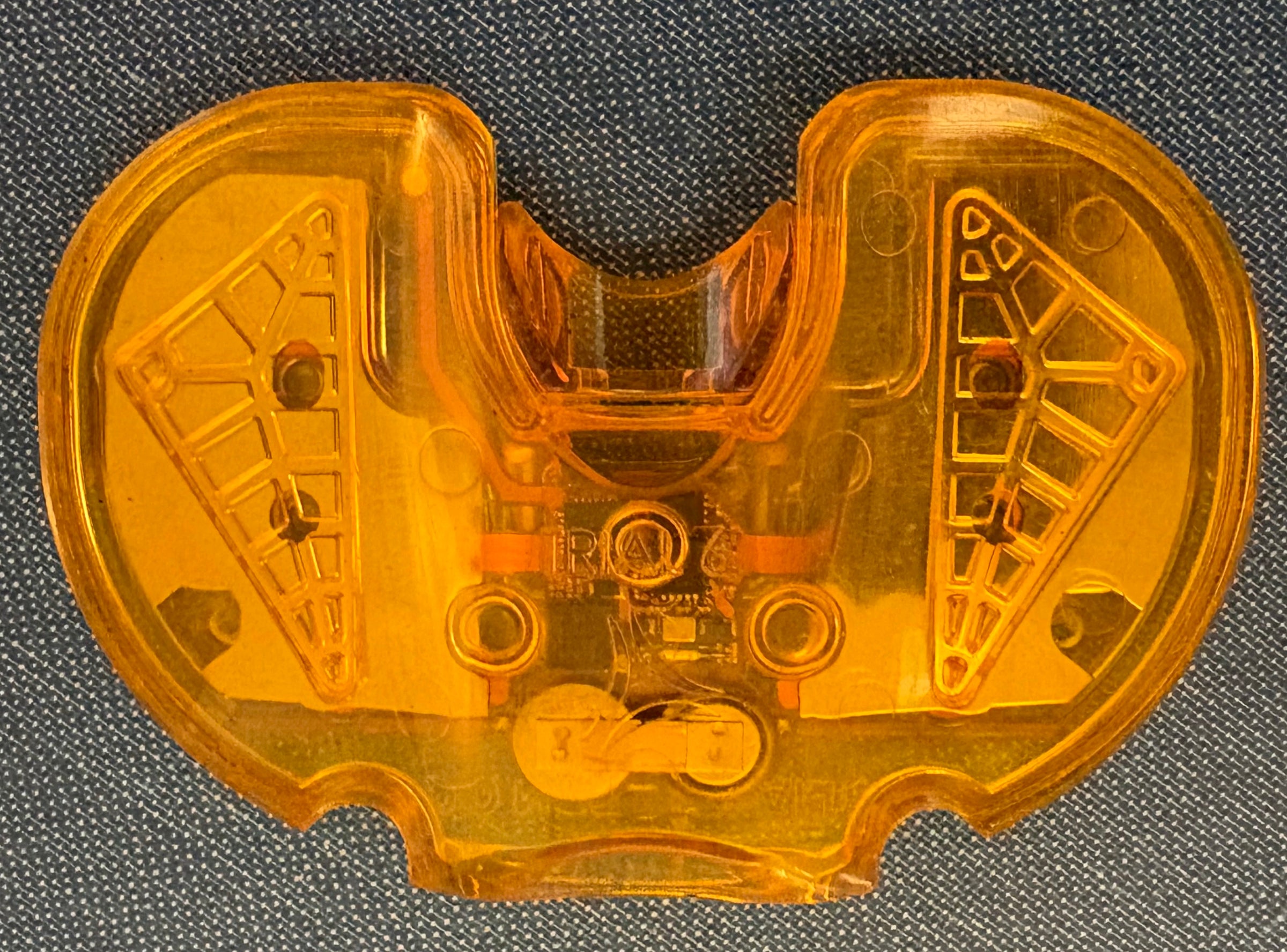URI professor examines use of technology to monitor patients after joint replacement
KINGSTON, R.I. – Oct. 6, 2025 – Joint replacement surgery has advanced dramatically thanks to new materials, techniques, and technology. Procedures are safer, less invasive, and require less recovery time. While there have also been great advancements in technology used to remotely monitor how patients recover from joint replacement surgery, also known as arthroplasty. However, these technologies have not yet been widely implemented.

At the University of Rhode Island, Ryan Chapman, assistant professor of kinesiology in the College of Health Sciences, is developing orthopedic technologies to improve patient outcomes. Chapman and colleague Professor Janie Astephen Wilson of Dalhousie University in Halifax, Canada recently examined the state of technology used for remote patient monitoring following joint replacement. Their peer-reviewed article is published in the Journal of Orthopaedic Research.
Advancements in technology
Sensors can now be embedded in implants during knee replacement surgery and can be used for gait and load sensing, activity monitoring, and implant micromotion detection. Chapman and his collaborators developed a device for implants which uses a gyroscope-based system to measure the alignment of the tibia coronal plane in knee replacements.
Emerging technologies for post-surgery monitoring include mobile applications, wearable sensors for mobility and temperature sensing, smart textiles, and sensor-enabled smart homes.
“Together, these technologies hold promise for more personalized, cost-effective strategies for comprehensive and patient-centered assessments that can inform tailored rehabilitation approaches, allow for near real-time assessment of patient outcomes, improve function, and promote earlier mobilization,” wrote Chapman and Astephen.
Chapman has established himself as a leading expert in the development of wearable motion sensors for monitoring patient recovery after joint replacements, earning patents for his novel technology and publishing several articles on the use of these technologies in monitoring recovery after knee, hip, and shoulder replacements. Chapman presented his lab’s advancements in wearable motion sensing in joint replacement at the International Society for Technology in Arthroplasty annual meeting in September in Rome, Italy.
As procedures improve, tech follows
According to Chapman, there are several reasons why the field of orthopedics has been slow to adopt e-health technologies for remote patient monitoring compared to other medical fields
“The plastic used in joint replacements used to break down rapidly inside the patient,” said Chapman. “Until that problem was solved, it didn’t make sense to spend lots of time, money, and energy on remotely monitoring patients. Moreover, when joint replacements failed, it was often multivariable. Developing a technology to remotely monitor a variety of variables was challenging.”
Now that joint replacements last longer and patients can resume an active lifestyle sooner, people are opting to have procedures at an earlier age and are starting to embrace technology used for post-surgery remote monitoring.
“The average age of individuals receiving joint replacements is 65 to 75,” said Chapman. “This demographic was historically significantly less interested in using technology to track their progress after a surgery. Now, that age range is starting to come down and individuals receiving joint replacements are far more technologically literate and accepting. As a result, we are beginning to see increased use of these remote monitoring technologies.”
Barriers to overcome
Despite advances in technology, Chapman and Astephen make the case that before remote arthroplasty monitoring technologies can be widely accessible and commonly used, several barriers need to be addressed. Inconsistent protocols, the need for clinical validation, reliance on patient compliance with sensor use, privacy concerns, cost challenges, and limited long-term data are some of the issues that require further research and viable solutions.
“Each of those problems require subtly different, but also interrelated solutions,” said Chapman. “For example, sensor compliance means we need patients to follow protocols to use the technology appropriately. This may require incentivization, which could vary from one person to another. One patient might have internal motivation, a second may be driven by what their doctor says, and a third may be driven by playing a rehabilitation game.”
Getting patients to embrace the technology often comes down to its functionality and design, which presents other challenges.
“Design choices for the sensors could change the cost, how we deploy it clinically, and if insurers are willing to pay for the technology,” said Chapman. “Cost and reimbursement challenges are highly dependent on the companies, insurers, and the government. Perhaps more important is the value of the technology in improving patient outcomes. If patients show significant improvement for equal or lower cost, the likelihood of adoption will increase.”
Depending on the technology selected, costs can range from hundreds of dollars for a disposable wearable sensor up to tens of thousands of dollars for home-integrated sensing systems, making many of these technologies cost-prohibitive in the absence of insurance or other reimbursement strategies. Chapman hopes his research team’s efforts to develop these remote monitoring technologies will continue driving healthcare value by improving patient outcomes and improve access to high-quality healthcare around the world.
Latest All News
- We Lived in the Woods: A Memoir From a Bygone EraWe Lived in the Woods: A Memoir From a Bygone Era Alexander B. Blunt, M.A. ’11 (2025)
- After Rhode Island’s shoreline access law, what’s next?KINGSTON, R.I. – Oct. 8, 2025 – These recent sunny days bring the last chances to access the Rhode Island coastline before chillier weather sets in, though that won’t keep Jesse Reiblich away. When he’s not in or around the water — as an avid surfer, diver, and sailor — the University of Rhode Island […]
- What If? An 85 Year Journey of the Confederate States of AmericaWhat If? An 85 Year Journey of the Confederate States of America Arthur S. Bobrow ’64 (2025)
- Next URI Honors Colloquium lecture to ask, ‘What Can We Afford?’KINGSTON, R.I. – Oct. 7, 2025 – In today’s political environment, it’s critical to understand how public policy intersects with United States colleges and universities. Higher education policy expert Dominique J. Baker will discuss how education policy shapes access, equity, and success for minoritized students in higher education, as the University of Rhode Island continues […]
- Applications due Oct. 24 for new environmental management fellowship programKINGSTON, R.I. — Oct. 6, 2025 — The University of Rhode Island Cooperative Extension is excited to announce the launch of the Environmental Management Fellows Program for students at URI and the Community College of Rhode Island. Cooperative Extension’s newest fellowship program builds on the success of URI’s popular and well-known Energy Fellows Program and […]
- URI Gravity Research group contributes to major black hole discovery, expands astrophysics programKINGSTON, R.I. – Oct. 6, 2025 – In 1915, Albert Einstein’s theory of relativity predicted that black hole collisions could only be detected from Earth by searching for gravitational waves. In September 2015, about a century after Einstein’s prediction, black holes were observed merging for the first time by the Laser Interferometer Gravitational-Wave Observatory (LIGO). […]













